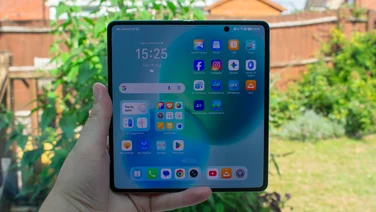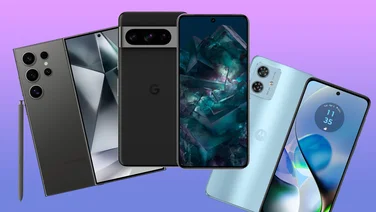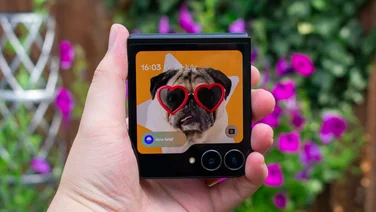To help us provide you with free impartial advice, we may earn a commission if you buy through links on our site. Learn more

- Beautifully made
- Decent camera
- Weak battery life
- Emotion UI
It’s been a while since we last took a look at Huawei’s P8 smartphone, so long in fact that a newer Lite version has since released along with its replacement, the P9. When I first put it through its paces last year, I found that its looks outweighed overall performance and battery life. Whether that outcome still holds true to this day remains to be seen.
With the Huawei P9 taking centre stage recently and bringing with it a fancy dual-lens camera, the P8 looks like it’s been left in the dust especially when you consider you’ll struggle to pick one up at an affordable price now, even when trawling through third party sellers. It was a well-priced phone back in the day and we’ll see if it’s still stood the test of time.
READ NEXT: Best smartphones 2016
Huawei doesn’t have the same allure as Apple or Samsung, at least here in the UK, but it’s capable of making equally beautiful phones. The P8, Huawei’s 2015 flagship, is a prime example. It’s not only the company’s first to use a full metal unibody construction, but also its thinnest phone yet, measuring a slender 6.4mm. At £400, too, it’s significantly cheaper than its metal rivals. Carphone Warehouse has the exclusive contract deal for the P8 (on its new iD network), and it’s yours for free on a £21.50 a month deal.
The phone is slimmer than the iPhone 6 and Samsung Galaxy S6 Edge, and is immediately obvious as soon as you take it out of the box. Slotted in sideways, its chamfered edges and rounded corners look stunning against the subtle glistening rear finish. The camera sits flush to the chassis, creating a seamless profile that might make Apple and Samsung owners a little jealous.

DISPLAY
It’s easily Huawei’s best-looking phone to date, and its 5.2in 1,920×1,080 resolution display is also one of the best we’ve seen outside of Samsung’s Super AMOLED panels. Huawei’s IPS-NEO technology is supposed to deliver brighter, sharper and more vivid images, as well as being more energy efficient.
The former appears to be true, with our colour calibrator measuring an impressive 99.6% of the sRGB colour gamut, making it one of the most accurate LCD displays we’ve seen. While peak brightness of 414.07cd/m2 can’t compete with the iPhone 6’s 542.88cd/m2, it’s bright enough to use outside and colours still pop off the screen. The low black levels of 0.26cd/m2 are also one of the best scores we’ve seen from an LCD display, comfortably beating both the iPhone 6 and the HTC One M9.

Deeper blacks not only make text easier to read but it also bodes well for contrast levels, and once again the P8 comes out ahead of its LCD rivals with a 1,462:1 ratio. Images had plenty of visible detail and wide viewing angles meant we could hold the phone at almost any angle and still clearly read the screen.
Admittedly, Huawei’s EMUI 3.1 interface doesn’t do a particularly good job of selling the phone when you first turn it on, as its muted colour palette and dull colour schemes do little to accentuate the display’s strengths. Fortunately, you can customise the main home theme with brighter, more colourful icons and different fonts, so you’ll probably want to spend a bit of time customising your handset to suit your own tastes.
BATTERY LIFE
On the downside, the display doesn’t seem to help the phone’s battery life, as its 2,680mAh battery only lasted a pitiful 7h 26m in our continuous video playback test with the screen set to 170cd/m2. This is extremely disappointing, as Huawei promised a full day’s use under heavy conditions and up to 1.5 days in normal use. Switching to the P8’s Smart energy-saving profile, which is meant to automatically adjust the CPU and network usage for more balanced performance, didn’t improve matters either – the P8 only managed another 20 minutes.

This should be just about enough to get you through the day, but it pales in comparison to the 13-odd hours we got from the iPhone 6 and Galaxy S6. Even the HTC One M9 managed to last another two hours in the same test, and that was already pretty underwhelming.
If you’re really in a pinch, you can also enable Ultra mode, which only enables basic calls and messaging functions. We’d also recommend turning on Huawei’s app power consumption firewall. This is the first phone we’ve seen to include such a feature, and it automatically blocks any app that’s using too much power, which is particularly helpful if something’s whirring away in the background unnoticed. According to Huawei, this should prolong the phone’s standby time by an extra 2.3 days, but considering how inaccurate its initial battery life figures were, we’d take this with a pinch of salt.
PERFORMANCE
The P8’s battery life is even more of a disappointment when you consider the phone’s 64-bit octa-core Kirin processor uses ARM’s big.LITTLE technology. It automatically switches between its faster quad-core 2.0 Kirin 930 chip and slower quad-core 1.5GHz Kirin 935 chip for low or high-intensity tasks, supposedly saving power when you’re in the menus or browsing the web.

Even at full pelt, however, it can’t match Samsung or HTC’s top-end phones, as our BaseMark OS II test only returned an overall score of 1,108 – much slower than the M9’s score of 1,463 and the Galaxy S6’s 1,643. BrowserMark painted a similar picture, as the P8’s somewhat low score of 1,174 was more in line with what we’ve seen from the 2nd Gen Moto E. Web browsing was noticeably jerky in places, particularly when we were scrolling quickly down pages with lots of images. Things improve if you take your time, but even panning round zoomed in text wasn’t quite as smooth as we’d like.
The P8’s Mali-T268 MP4 GPU will struggle to play 3D games at their highest settings as well, as our BaseMark X 1.1 graphics benchmarks were once again a long way behind the competition. On Medium graphics settings, the P8 scored 12,681 overall, averaging just 16.2fps in the Dunes test and 21.4fps in the Hangar test. The One M9 and Galaxy S6, meanwhile, scored more respectable figures of 28,074 and 31,157 on Medium and averaged at least 30fps in each test, making them better choices for mobile gamers.
STORAGE
Both the 16GB and 64GB versions of the P8 have a microSD card slot for expanding storage up to 128GB, rendering the larger version slightly pointless unless you want one in Carbon Black or Prestige Gold. The 16GB version, only comes in Titanium grey and the Mystic Champagne model reviewed here.
CAMERA
The rear-facing 13-megapixel sensor can’t match the Galaxy S6 or One M9 for resolution, but Huawei claims its ‘world’s first’ 4-colour RGBW imaging sensor cuts noise in low light conditions by 78% while providing 32% higher brightness and contrast levels. In our outdoor shots, it exposed the sky and clouds very effectively, capturing plenty of detail and putting other flagship cameras to shame. However, we noticed a tendency to overexpose certain parts of images, leaving them washed out. Colours looked natural outdoors, but became overly vivid when shooting inside.

We can’t criticise the level of detail on display, with all of our images showing a startling level of clarity. You’ll have to zoom in a long way before you can spot any pixelation or blurring of detail. Huawei’s 1.2-degree optical image stabilisation (twice that of Apple’s iPhone 6 Plus) also helps the P8 take clear, relatively noise-free low light images.

Auto mode is forced on by default, and you only have HDR, Panorama, Super Night, Watermark All-Focus and Best Photo modes to choose from. All-Focus mode lets you change the focus point once you’ve taken an image, while Best Photo takes multiple shots before letting you choose your favourite. It’s also possible to adjust the exposure, saturation, contrast and brightness levels within the settings menu, but this isn’t convenient when you’re trying to capture something quickly.
One particularly fun aspect is the light painting mode. This is designed to take long-exposure shots of someone making patterns with a light source, such as a torch. As your subject loops and twirls to build up ghostly light patterns, the image builds up on your screen in real-time, so you can even direct the shoot. A simple example is to draw a heart shape around a person’s head, or you could go wild, as Huawei did when it hired artist Von Wong (below).

USER INTERFACE
Huawei’s EMUI 3.1 interface doesn’t have an app tray, so you’ll need to organise all your apps on the phone’s nine available home screens. This isn’t too much of a hassle, as you can create folders to keep apps grouped together, but it’s different from almost every other Android smartphone. You can also change the home screen grid layout from 4×5 to 5×4 or even 5×5, allowing you to fit more apps and widgets on the screen.
Another minor irritation is that Notifications and Settings are separated into two separate tabs when you swipe down from the top, with Notifications always coming up first if you have any waiting. This means you either have to tap the tab or swipe to the side to get to the Settings menu. We’d prefer them to be integrated using the Android 5.0 style.

One of the stranger aspects of the P8 is Huawei’s new Knuckle Sense technology. This allows you to perform certain functions with a tap of your knuckle instead of your fingertip, such as taking a screenshot or cropping an area of a web page so you can share it instantly with your friends. We had no problems with it ourselves, but others that used the phone complained that it constantly detected fingers as knuckles. Annoyingly there’s no way to turn it off, either.
CONCLUSION
We really want to like the P8, but Huawei’s best efforts have failed to live up to expectations. It’s a beautifully made phone, but battery life and usability pales in comparison to the current crop of competition from Samsung, HTC and LG. The P8 is a fraction cheaper than other flagship phones, with the 16GB version costing around £400 SIM-free, but it’s not enough to make it a viable alternative.







